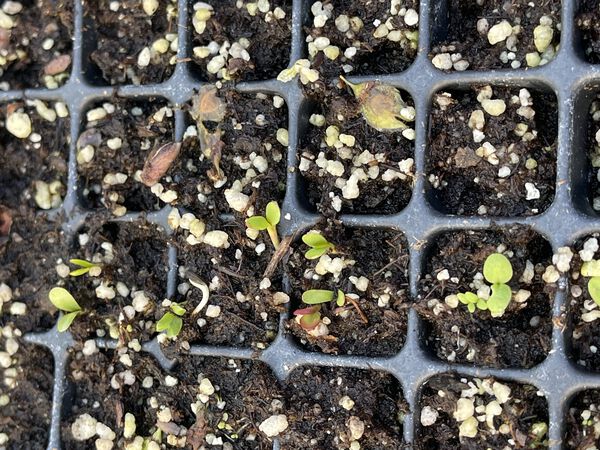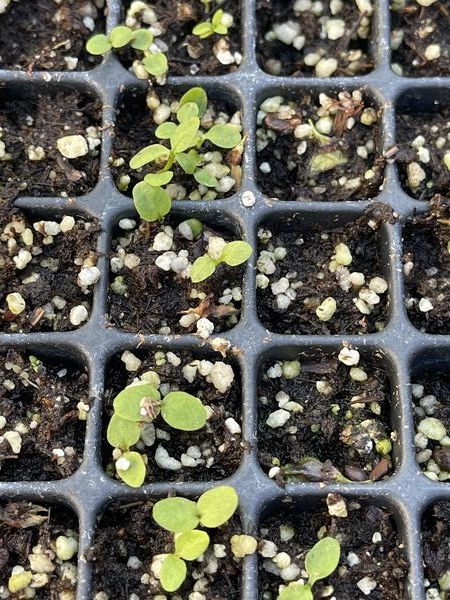Psychological spring
In places where spring seems to be a long time coming, there is a particular melancholy that sets in when one realizes that the season is, at least for aesthetic purposes, over. After the first round of new growth–the plants that cheer everyone up with their hardy blooms when it feels too cold for vegetative life–when the weeds and the trees look leafed-out enough to pass for mid-summer, when there are a few hot days that make one lose–even for a minute–one’s reflexive gratitude for the warm weather–that’s the end of psychological spring.

There’s another part to that feeling for me. I have a few small garden plots, and I also mark the moment when the seedlings I’ve started lose their compact, orderly form–beginning to stretch this way and that out of their own principles.
What is it that’s charming about seedlings? When they first emerge, they are pretty much all well-behaved. Next they show one, two, three of their true leaves, and I imagine that they will look straight and compact like this forever, only bigger. Of course this is not right. Soon, they will become unruly, stretch out of their pots, enter into tangled warfare with their neighbors, and nag at me that if I don’t do something with them soon, they will die or be stunted and I will have wasted the season.
In the spring, gardening is a rational task. Plans, maps, calendars-plants are at least potentially faithful to the winter vision.

But at some point by around this time, in the transition to summer, I get a premonition of the chaos that is coming, that it is more powerful than me. There ought to be a word for this phenomenon, the moment when a rational order gives way to organic spontaneity. There are probably gardeners for whom the early period is the best part of the season, when they feel most confident and fulfilled by their avocation. Once the plants are in control, it’s all downhill.